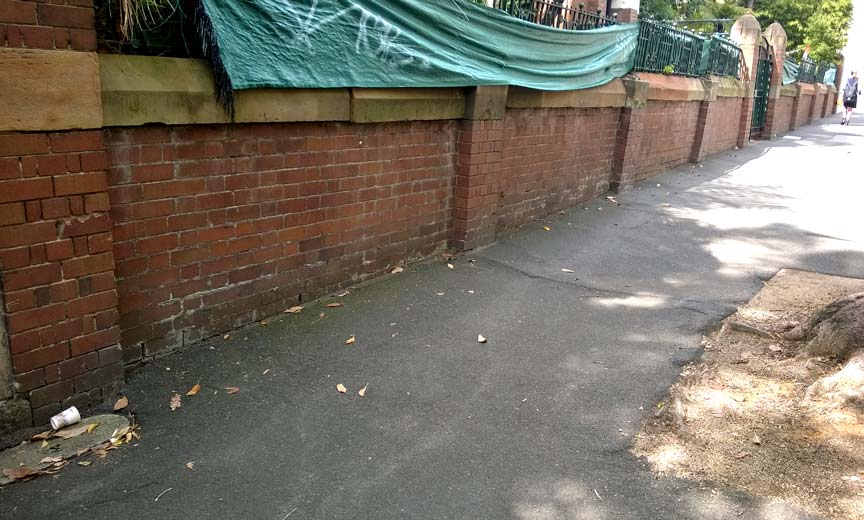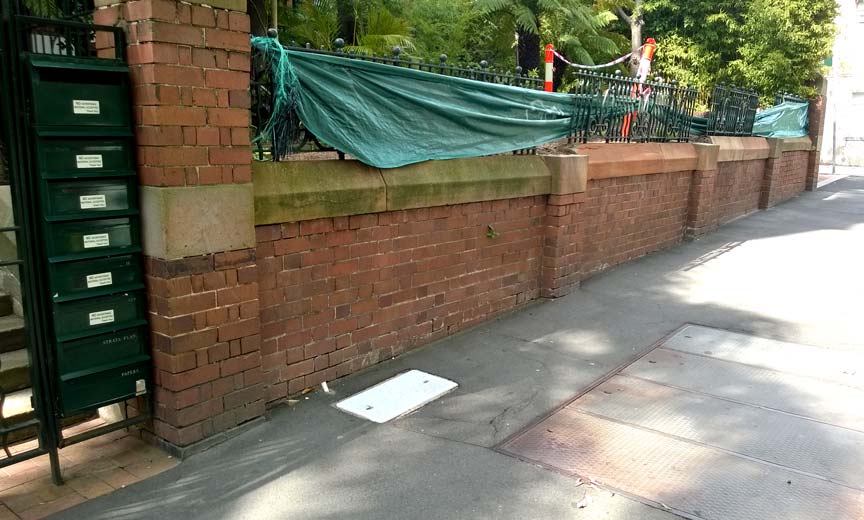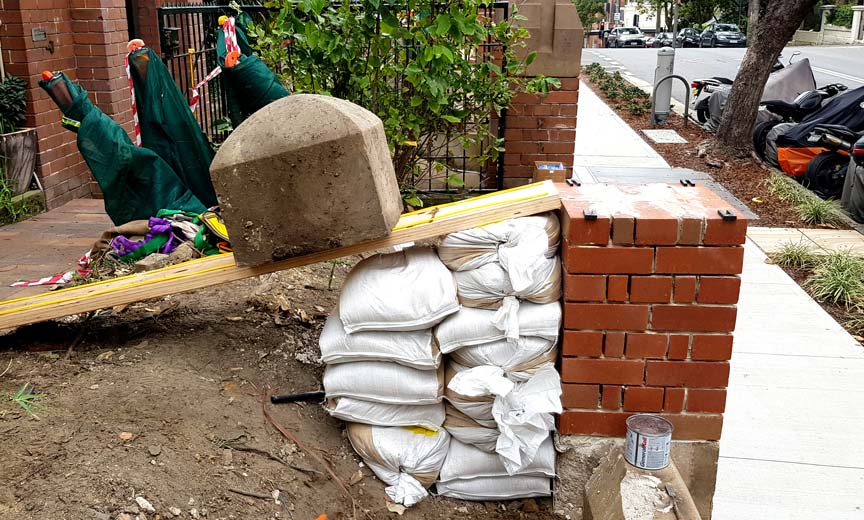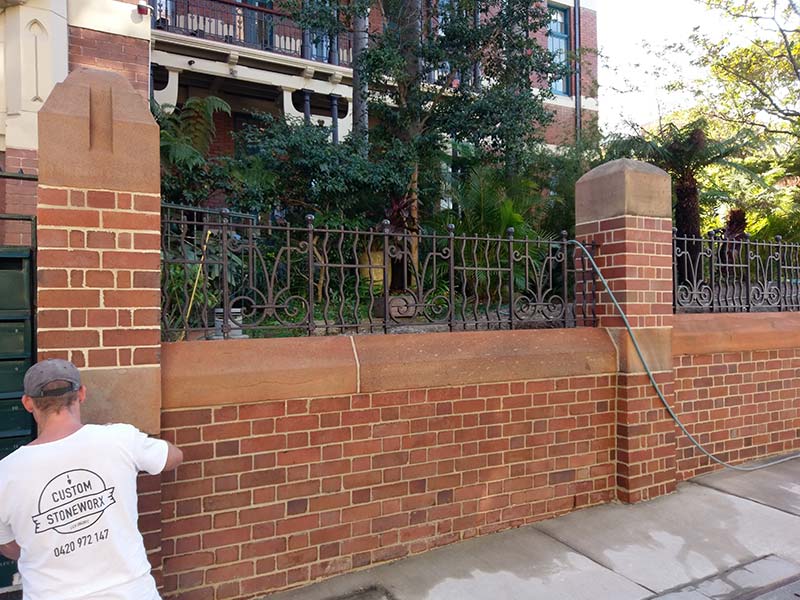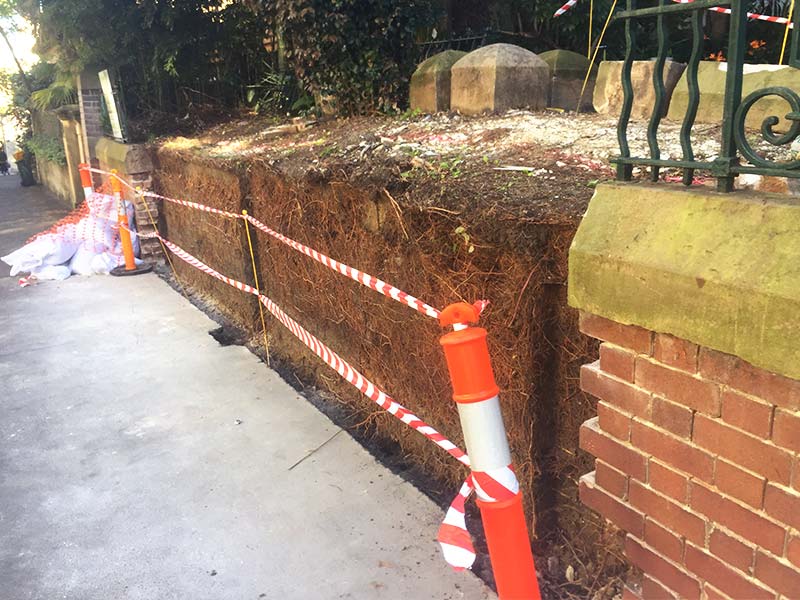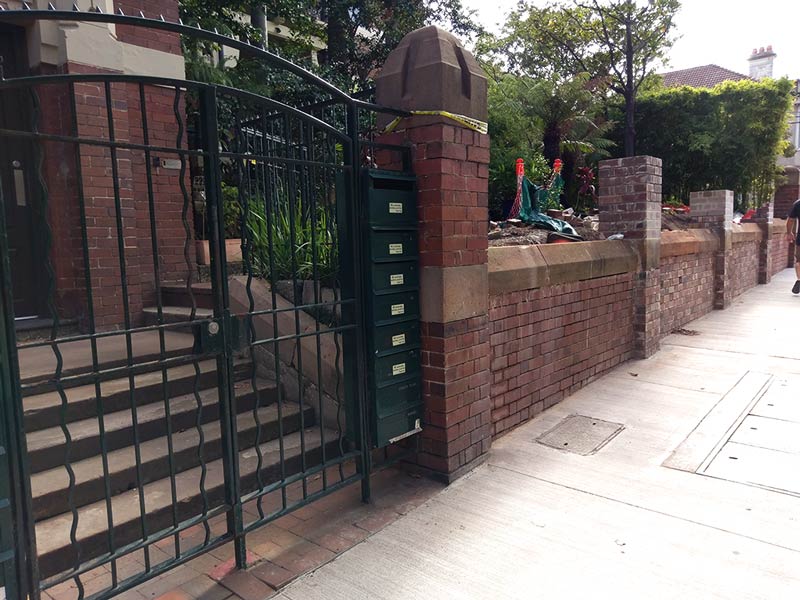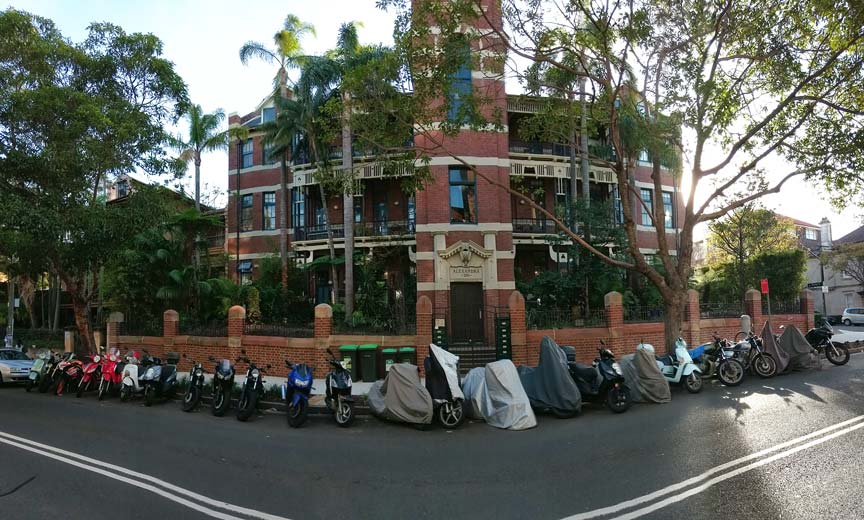DURING
AFTER
- June 20, 2018
CHALLENGES
In many ways, a heritage-listed property offers the owner an opportunity to act as the custodian of a piece of history and its related cultural aspects in material form. Any proposed alterations or restoration of the building, structures, or environment require rigorous adherence to specifications and approval from relevant authorities to preserve the integrity of the history-defining characteristics and qualities of the property. As building standards have improved considerably between centuries, works on heritage-listed properties will often reveal underlying inadequacies which need to be resolved during the proposed works. Such issues, combined with a tight budget, challenged the owners of a heritage-listed property in Darlinghurst, NSW when a deteriorating retaining wall on the boundary between the elevated grounds of the property and the public footpath was considered to be structurally inadequate and in need of partial reconstruction.
SOLUTIONS
The team of SES engineers reviewed the project and assessed numerous design iterations to ascertain the most conservative and cost-effective methods for the remediation of the boundary retaining wall. This in-depth assessment was imperative due to the limited funds available for properly executing the structural remediation with respect to the heritage aspects of the building.
Because of the heritage-listing of the building and its heritage-conservation location, a Development Application (DA) was required. SES worked closely with heritage architects and certifiers to complete and satisfy all DA requirements.
It was later discovered that the original construction of the boundary retaining wall had not been intended to retain the soil; SES determining this deficit as possibly the reason behind its failure. To rectify the issue effectively yet most efficiently in accordance with budget constraints, only partial reconstruction of the boundary retaining wall was required. A total of four wall sections, the two middle sections on either side of the entry gate, were demolished and reconstructed with new reinforced concrete footing.
The old bricks were used along the face of the boundary retaining wall to maintain the heritage appearance. Structural strength was still needed, so more structurally-adequate bricks were placed behind the boundary wall. In areas where new bricks were necessary, SES co-ordinated selection with the heritage architect, contractor, and the owners. Co-ordination ensured the new bricks matched the existing bricks and all parties concerned were satisfied. The wrought-iron fencing and sandstone placed along the entire boundary wall were also remediated during the project.
During the works, no stormwater drainage system was identified behind the boundary retaining wall – a deficit which required prompt action. To have completed the project without addressing stormwater drainage would have affected the structural adequacy of the new boundary retaining wall. SES designed and installed a new retaining wall drainage system to improve and maintain the structural stability of the boundary retaining wall.
RESULTS
The heritage aesthetics of the property were restored to an authentic and improved appearance. Peace-of-mind was assured through the lack of stormwater drainage being identified and corrected. Proper drainage of stormwater would improve the stability and longevity of the boundary retaining wall remediation. The remediation works also added value to the property. SES was able to assist with the heritage aspects of the project including specifications and the development application, and coordination between authorities, advisors, contractors, and stakeholders.
SES was able to determine cost-effective methods for the remediation works and retain the necessary heritage integrity. Efficient project management by SES relieved building owners of the complex responsibilities and procedures associated with coordinating approvals and works over the protracted project duration – beginning in 2014, and reaching practical completion on 7 June 2018.
- Compliance Issues
- Heritage Works
- Structural & Aesthetic Issues
